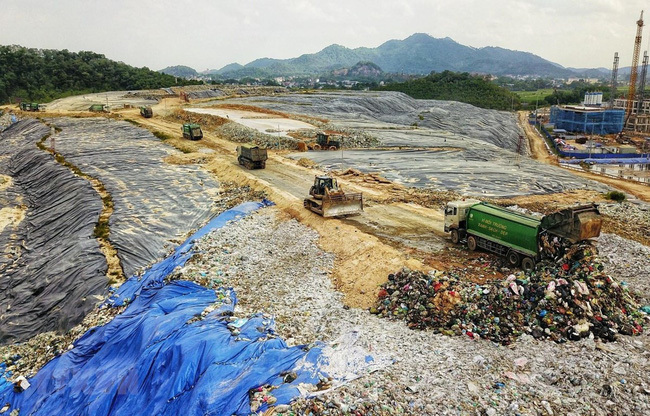 |
|
Nam Son Waste Treatment Complex in Soc Son District.
|
Nam Son Waste Treatment Complex in Soc Son District now has to serve up to 5,000 tonnes of rubbish per day compared to its capacity of 1,000 tonnes. The waste is from 17 of 31 city districts, accounting for 77% of Hanoi's total waste amount.
Meanwhile, Xuan Son solid waste treatment area in Son Tay Town is designed to deal with some 700 tonnes of rubbish per day, but the amount has reached up to 1,300 tonnes per day to date.
According to Hanoi authorities, up to 89% of Hanoi’s solid waste amount is buried, while the remainder is incinerated. Many waste treatment plants continue to use backward incineration technology.
Modern waste processing technologies, including taking advantage of waste to be used as microbial fertilizer production, have been halted due to failure.
Solid waste areas in Nam Son and Xuan Son landfills have been forecasted to run out of space by the end of this year. If nothing has been done to improve the situation, the areas would have to be closed.
Nguyen Huu Tien, Director of Hanoi Urban Environment One Member Co., Ltd, the operators of Nam Son and Xuan Son landfills, said that the overloading of these two dumping sites will have put great pressure on the city’s waste treatment. So, it was essential to speed up sluggish waste treatment projects in Hanoi.
Over the past years, Hanoi has called for investment into modern solid waste treatment plants. The city has approved five projects of this kind, including two projects in Dong Ke (Chuong My District) and Phu Dong (Gia Lam District); the Soc Son waste-to-electricity plant (belonging to Nam Son Complex), Xuan Son waste-to-electricity, and a project on gasifying waste to generate electricity.
However, all of them which are scheduled for completion in 2021 are being carried out at snail’s pace. Among those, the Nam Son waste-to-electricity plant with a capacity of 4,000 tonnes a day is expected to be finished soonest. Dtinews/Dan Viet